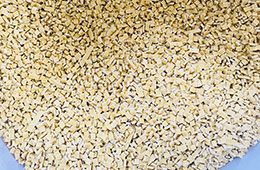Everything You Need To Know About Polyethylene (PE)(TWO)
Time:2019-03-21 Editor:恩特科技
Different types of Polyethylene exhibit wide variability in their crystalline structures. The less crystalline (the more amorphous) a plastic is, the more it demonstrates a tendency to gradually soften (i.e. they have a wider range between their glass transition temperature and their melting point). Crystalline plastics, by contrast, exhibit a rather sharp transition from solid to liquid.
Polyethylene is a homopolymer in that it is composed of a single monomer constituent (in this case ethylene: CH2=CH2).
Is PE toxic?
In solid form, no. In fact, Polyethylene is often used in food handling. It could be toxic if inhaled and/or absorbed into the skin or eyes as a vapor or liquid (i.e. during manufacturing processes). Be careful and closely follow handling instructions for molten polymer in particular.
What are the advantages of Polyethylene?
?Impact Resistance: One of the top benefits of using polyethylene is that it is impact resistant. This makes it a great option for things such as boats and large containers.
?Corrosion Resistance: This material is also known to be corrosion resistant. There’s no need to worry about damages caused by oxidation and other chemical reactions. This makes it an excellent choice for larger structures of all kinds.
?Easy to Clean: Another huge advantage of using this material is that it is easy to clean. Rather than needing a ton of cleaning products, simple soap and water should get your product looking new again.
?Eco-Friendly: One of the best reasons for using polyethylene for large plastic structures is that is considered eco-friendly. Given the massive structures that are built with plastic, it makes sense to use a material that is fairly green-friendly.
Polyethylene is a homopolymer in that it is composed of a single monomer constituent (in this case ethylene: CH2=CH2).
Is PE toxic?
In solid form, no. In fact, Polyethylene is often used in food handling. It could be toxic if inhaled and/or absorbed into the skin or eyes as a vapor or liquid (i.e. during manufacturing processes). Be careful and closely follow handling instructions for molten polymer in particular.
What are the advantages of Polyethylene?
?Impact Resistance: One of the top benefits of using polyethylene is that it is impact resistant. This makes it a great option for things such as boats and large containers.
?Corrosion Resistance: This material is also known to be corrosion resistant. There’s no need to worry about damages caused by oxidation and other chemical reactions. This makes it an excellent choice for larger structures of all kinds.
?Easy to Clean: Another huge advantage of using this material is that it is easy to clean. Rather than needing a ton of cleaning products, simple soap and water should get your product looking new again.
?Eco-Friendly: One of the best reasons for using polyethylene for large plastic structures is that is considered eco-friendly. Given the massive structures that are built with plastic, it makes sense to use a material that is fairly green-friendly.
Overall, there are plenty of benefits to using polyethylene to create large structures. In addition to impact and corrosion resistance, it is easy to clean and eco-friendly.
